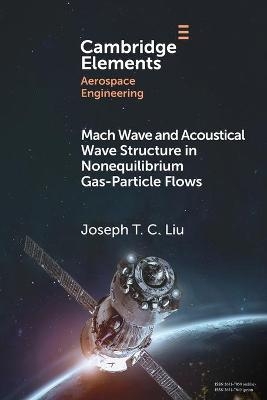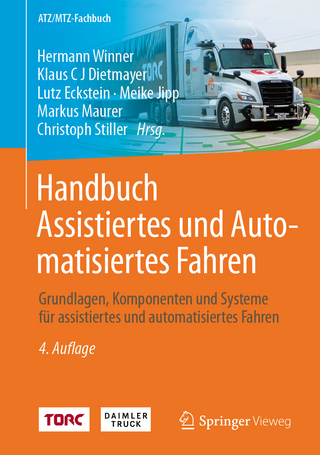
Mach Wave and Acoustical Wave Structure in Nonequilibrium Gas-Particle Flows
Seiten
2021
Cambridge University Press (Verlag)
978-1-108-96488-3 (ISBN)
Cambridge University Press (Verlag)
978-1-108-96488-3 (ISBN)
Gas-particle flows became relevant in Aerospace Engineering owing to small solid particle additives to alleviate acoustical instabilities in solid propellant rocket motors, thereby motivating the study of a variety of nonlinear and linear waves. Emphasis is placed on fundamental aspects of the relaxation nature of the flow processes.
In this Element, the gas-particle flow problem is formulated with momentum and thermal slip that introduces two relaxation times. Starting from acoustical propagation in a medium in equilibrium, the relaxation-wave equation in airfoil coordinates is derived though a Galilean transformation for uniform flow. Steady planar small perturbation supersonic flow is studied in detail according to Whitham's higher-order waves. The signals owing to wall boundary conditions are damped along the frozen-Mach wave, and are both damped and diffusive along an effective-intermediate Mach wave and diffusive along the equilibrium Mach wave where the bulk of the disturbance propagates. The surface pressure coefficient is obtained exactly for small-disturbance theory, but it is considerably simplified for the small particle-to-gas mass loading approximation, equivalent to a simple-wave approximation. Other relaxation-wave problems are discussed. Martian dust-storm properties in terms of gas-particle flow parameters are estimated.
In this Element, the gas-particle flow problem is formulated with momentum and thermal slip that introduces two relaxation times. Starting from acoustical propagation in a medium in equilibrium, the relaxation-wave equation in airfoil coordinates is derived though a Galilean transformation for uniform flow. Steady planar small perturbation supersonic flow is studied in detail according to Whitham's higher-order waves. The signals owing to wall boundary conditions are damped along the frozen-Mach wave, and are both damped and diffusive along an effective-intermediate Mach wave and diffusive along the equilibrium Mach wave where the bulk of the disturbance propagates. The surface pressure coefficient is obtained exactly for small-disturbance theory, but it is considerably simplified for the small particle-to-gas mass loading approximation, equivalent to a simple-wave approximation. Other relaxation-wave problems are discussed. Martian dust-storm properties in terms of gas-particle flow parameters are estimated.
1. Introduction; 2. Conservation equations of gas-particle flows; 3. Small perturbation equations in a stationary frame; 4. Aerodynamic interpretation of acoustics in gas-particle flows; 5. Steady small-perturbation theory; 6. Some limiting cases; 7. Two-dimensional steady supersonic flow; 8. Approximate consideration based on a 'rarefied' particle cloud; 9. Particle collision with the wall and the normal force; 10. The wall-pressure coefficient; 11. Numerical examples; 12. Relation to other relaxation wave problems; 13. Concluding remarks. Appendix A. Appendix B. References.
| Erscheinungsdatum | 11.10.2021 |
|---|---|
| Reihe/Serie | Elements in Aerospace Engineering |
| Zusatzinfo | Worked examples or Exercises |
| Verlagsort | Cambridge |
| Sprache | englisch |
| Maße | 152 x 228 mm |
| Gewicht | 127 g |
| Themenwelt | Technik ► Fahrzeugbau / Schiffbau |
| Technik ► Luft- / Raumfahrttechnik | |
| ISBN-10 | 1-108-96488-5 / 1108964885 |
| ISBN-13 | 978-1-108-96488-3 / 9781108964883 |
| Zustand | Neuware |
| Haben Sie eine Frage zum Produkt? |
Mehr entdecken
aus dem Bereich
aus dem Bereich
Biomechanik, Unfallvermeidung, Insassenschutz, Sensorik, Sicherheit …
Buch | Hardcover (2024)
Springer Vieweg (Verlag)
99,99 €
Grundlagen, Komponenten und Systeme für assistiertes und …
Buch | Hardcover (2024)
Springer Vieweg (Verlag)
279,99 €


